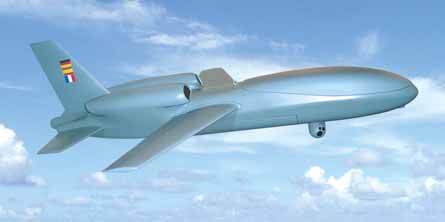European Commission to lead development of multi-use vehicle, with maritime surveillance system also proposed
The European Defence Agency and the European Commission are planning a joint development programme for a new long-endurance unmanned air vehicle, with initial funding starting in 2008.
Plans are also being prepared for the launch of a UAV-based maritime surveillance system for Europe based on a combination of endurance and tactical-class platforms.
The new-endurance UAV would seek to support civil and military applications and use a modular design approach to allow maximum commonality between variants. Development of the air vehicle will be led by the EC, while military aspects of the project such as payloads will be led by the EDA.
Funding for the project is expected to run to millions of euros, with European aerospace and defence companies expected to part-finance the effort. Initial talks have been held with the peak European AeroSpace and Defence (ASD) industries association of Europe, says Belgian army Col Maurice de Langlois, EDA capability manager for engage and area protection.
|
|---|
EADS's Advanced UAV could form the basis of the new vehicle |
The ASD was invited by the EC to provide detailed proposals in February, with that organisation designating Alenia Aeronautica as its industrial co-ordinator.
The EDA plans to hold a major industry briefing for the project in early June to help engage European research agencies and second- and third-tier suppliers.
The new endurance UAV project flows out of the collapse of the French DGA-initiated Euromale development last year, which folded due to major cost and schedule hurdles.
The EDA has explored a development pathway based on the EADS "Advanced UAV" modular system being jointly discussed by France, Germany and Spain as a common development programme, leveraging work initially carried out on the EADS Barracuda new-generation UAV programme. However, de Langlois says the timeframes associated with Advanced UAV currently differ from those planned for the joint EDA-EC project.
Source: Flight International
























